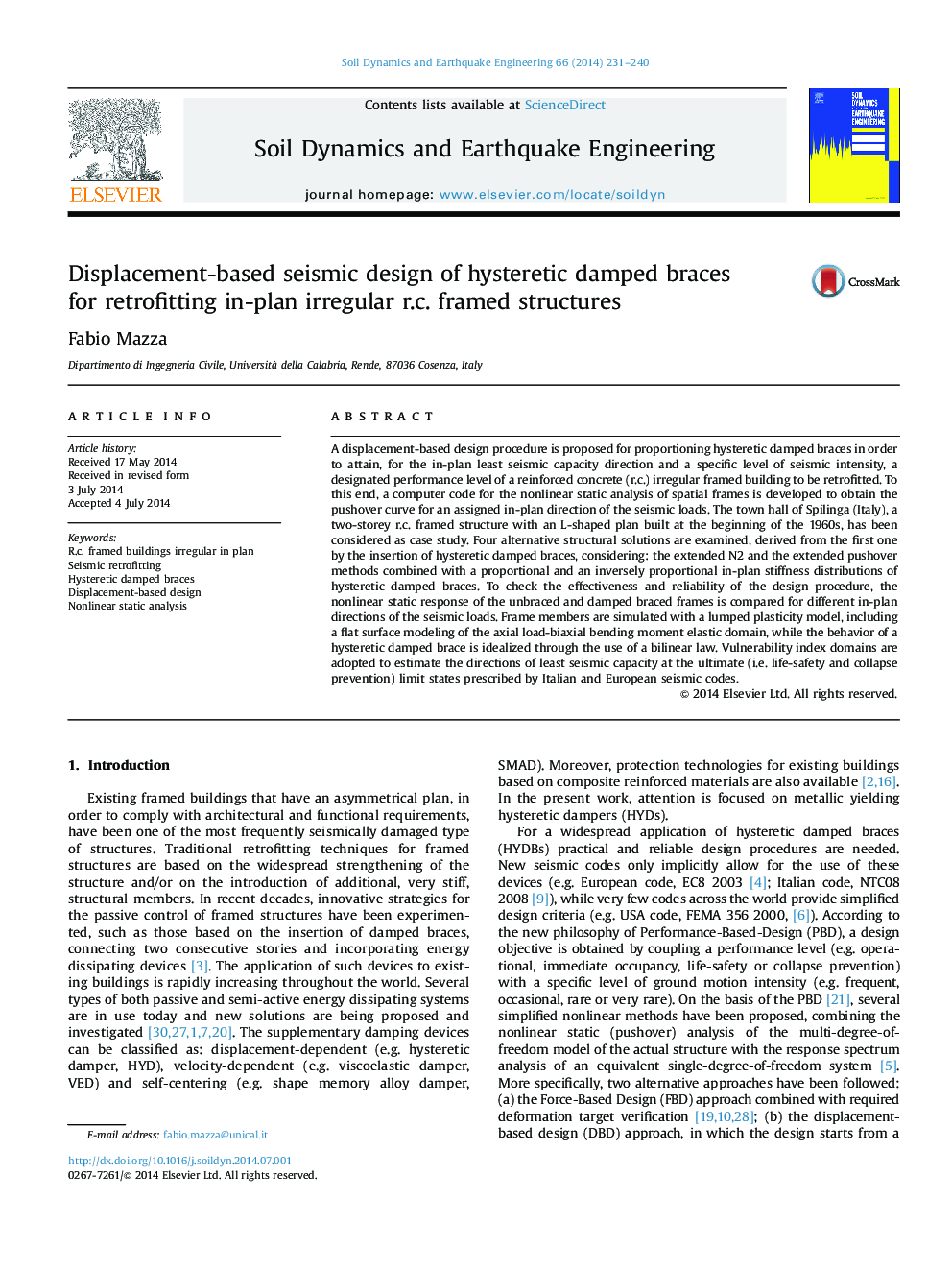| Article ID | Journal | Published Year | Pages | File Type |
|---|---|---|---|---|
| 6772412 | Soil Dynamics and Earthquake Engineering | 2014 | 10 Pages |
Abstract
A displacement-based design procedure is proposed for proportioning hysteretic damped braces in order to attain, for the in-plan least seismic capacity direction and a specific level of seismic intensity, a designated performance level of a reinforced concrete (r.c.) irregular framed building to be retrofitted. To this end, a computer code for the nonlinear static analysis of spatial frames is developed to obtain the pushover curve for an assigned in-plan direction of the seismic loads. The town hall of Spilinga (Italy), a two-storey r.c. framed structure with an L-shaped plan built at the beginning of the 1960s, has been considered as case study. Four alternative structural solutions are examined, derived from the first one by the insertion of hysteretic damped braces, considering: the extended N2 and the extended pushover methods combined with a proportional and an inversely proportional in-plan stiffness distributions of hysteretic damped braces. To check the effectiveness and reliability of the design procedure, the nonlinear static response of the unbraced and damped braced frames is compared for different in-plan directions of the seismic loads. Frame members are simulated with a lumped plasticity model, including a flat surface modeling of the axial load-biaxial bending moment elastic domain, while the behavior of a hysteretic damped brace is idealized through the use of a bilinear law. Vulnerability index domains are adopted to estimate the directions of least seismic capacity at the ultimate (i.e. life-safety and collapse prevention) limit states prescribed by Italian and European seismic codes.
Related Topics
Physical Sciences and Engineering
Earth and Planetary Sciences
Geotechnical Engineering and Engineering Geology
Authors
Fabio Mazza,
